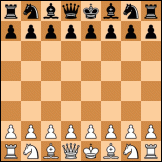Here I explain a little how I calculate those intervals:rvida wrote:Your math skills seem to be well beyond my level, I am not able to comment.Ajedrecista wrote:Hello Richard!
...
1330 games are a nice amount and I tried to find (with the only help of pencil, paper and Derive 6) the uncertainty of this test with ~ 95.45% confidence (2-sigma confidence)
...
... a lot of math ...
...
Do not read too much into version numbers. They are quite arbitrary. I made up a scheme where odd numers (1.1, 1.3, ...) are meant to be development versions, even numbers (1.0, 1.2, 1.4, ...) to be public releases.Ajedrecista wrote: Just for curiosity: the previous development version was Critter 1.1.36 (if I remember well) and finally Critter 1.2 was released; now, with Critter 1.3.53c development version... the next public release will be Critter 1.4?
IIRC the last beta version before 1.2 release was 1.1.49.
http://www.talkchess.com/forum/viewtopi ... 31&t=41090
Sedat Canbaz thought I was not wrong, so a good start is a good start! This time, with number of draws unknown, I calculated a general standard variation in function of the draw ratio (D) with pencil and paper (for removing the errors I made), then used Derive 6 for representate the graph and pick the values of uncertainties at certain draw ratios (0%, 5%, 10%, ...). I am sure that BayesElo and EloStat give (more less) the values I posted, so no need of do all what I did. My intention was to be orientative.
Referring to Critter 1.1.49, maybe I was confused with Open Critter 1.1.36 and 1.1.37 (hoping no mistakes again). I sometimes have good memory, but not always, as everybody can see. Thanks for sharing your numeration scheme: I agree that the number version is secondary, but knowing it is also interesting. Good luck with Critter 1.4!
Regards from Spain.
Ajedrecista.
